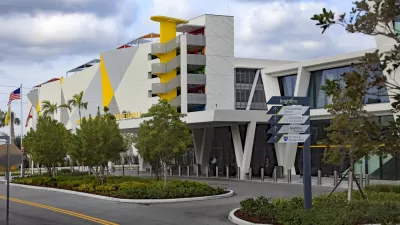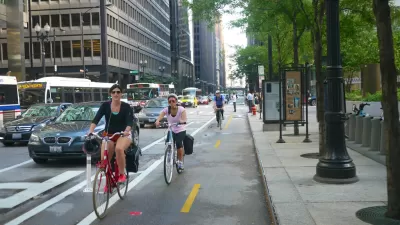In the 1960s and 70s, America witnessed a bike boom that sounds very similar to today's. Although it petered out, Tom Payne argues why contemporary circumstances have altered the long-term viability of a bicycling revolution.
As cities across the world seek to ease congestion and attract young professionals through investment in bicycle infrastructure, bike use is surging. "Portland hipsters are taking to the streets on fixies, east Londoners are dusting off vintage Raleighs and Sydney corporates are swapping golf clubs for lycra… As a result, the growth in cycling numbers has been immense in many cities worldwide," says Payne.
But unlike America's ‘bike boom’ of the late 60s and early 70s, which saw bike sales increase from 2.5 to 15 million between 1963-73, Payne thinks the current period of growth is sustainable. "We’re aware that we can no longer keep producing without recycling, we can no longer all own large homes, and we can no longer all drive to work – not only do our cars not all fit in our cities, but we are also running out of the very resource that drives them," he notes.
"The car will not simply disappear and bicycles will not suddenly take over our streets. But as we look for alternative solutions to our current transport woes, cycling is suddenly looking like a pretty smart option. Rather than just a fad, I’d argue that today’s boom will be sticking about for a while. Just like the revolution of a wheel, we are perhaps, returning to where it all began."
FULL STORY: Bicycle Revolution or Urban Fad?

Trump Administration Could Effectively End Housing Voucher Program
Federal officials are eyeing major cuts to the Section 8 program that helps millions of low-income households pay rent.

Planetizen Federal Action Tracker
A weekly monitor of how Trump’s orders and actions are impacting planners and planning in America.

Ken Jennings Launches Transit Web Series
The Jeopardy champ wants you to ride public transit.

Rebuilding Smarter: How LA County Is Guiding Fire-Ravaged Communities Toward Resilience
Los Angeles County is leading a coordinated effort to help fire-impacted communities rebuild with resilience by providing recovery resources, promoting fire-wise design, and aligning reconstruction with broader sustainability and climate goals.

When Borders Blur: Regional Collaboration in Action
As regional challenges outgrow city boundaries, “When Borders Blur” explores how cross-jurisdictional collaboration can drive smarter, more resilient urban planning, sharing real-world lessons from thriving partnerships across North America.

Philadelphia Is Expanding its Network of Roundabouts
Roundabouts are widely shown to decrease traffic speed, reduce congestion, and improve efficiency.
Urban Design for Planners 1: Software Tools
This six-course series explores essential urban design concepts using open source software and equips planners with the tools they need to participate fully in the urban design process.
Planning for Universal Design
Learn the tools for implementing Universal Design in planning regulations.
Ada County Highway District
Clanton & Associates, Inc.
Jessamine County Fiscal Court
Institute for Housing and Urban Development Studies (IHS)
City of Grandview
Harvard GSD Executive Education
Toledo-Lucas County Plan Commissions
Salt Lake City
NYU Wagner Graduate School of Public Service





























